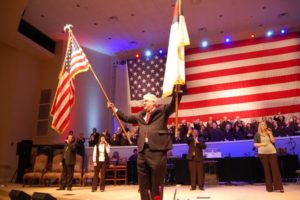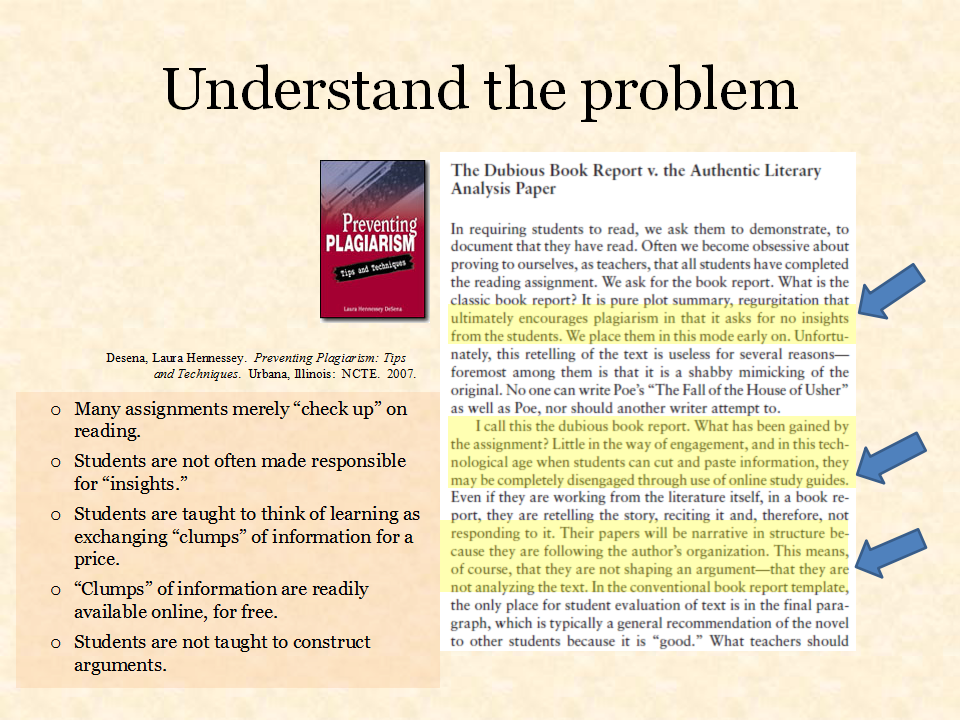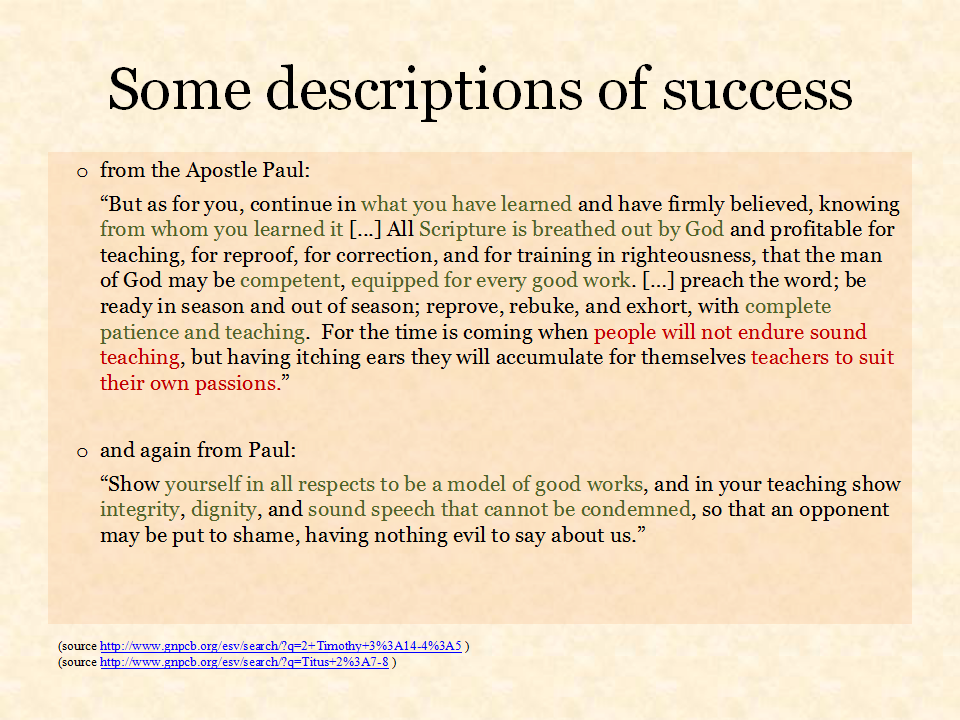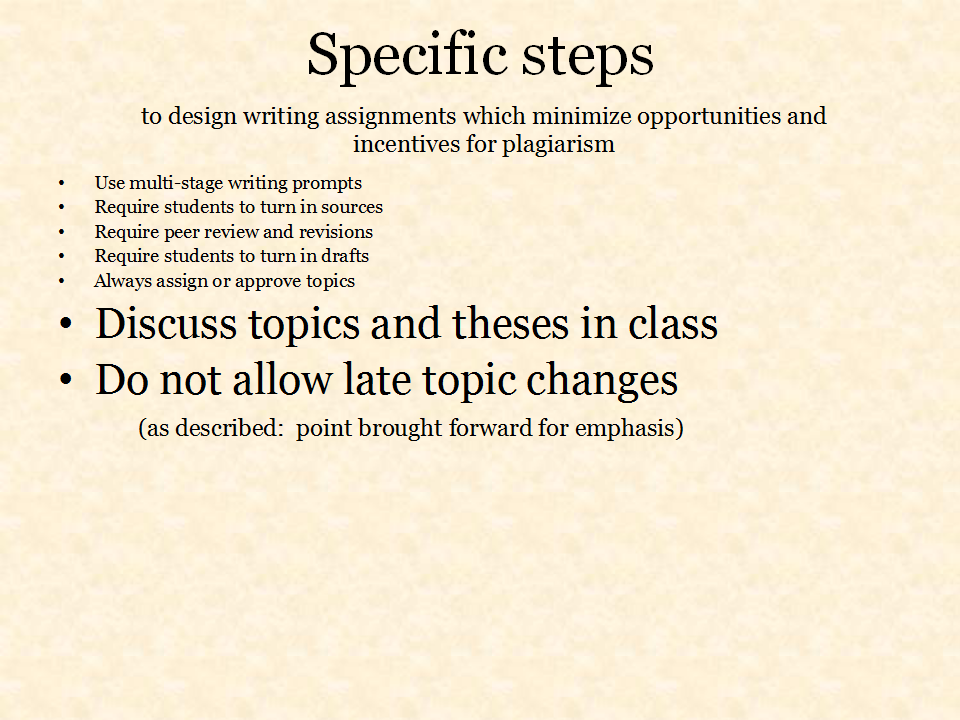Dr. David Lyle Jeffrey’s seminars Fundamentalisms in Literature and The Bible & Literary Criticism were epochal events for me. The depth and breadth of the reading and the ambit of the discussions demanded that I deepen and adjust my thinking, if I were to be at all consistent with my own commitments to learning that was true, morally useful, and spiritually enabling. Persuading me to research Amos Comenius for my seminar paper, among other things, pushed me out of my somewhat too facile notion of the relationship between Milton’s religious and political commitments and the medieval and “scholastic” backdrop. The comparison to my earlier piece on Milton and Locke is pretty bracing, though I was still working the same “patch,” so to speak.
The results would be some time in arriving: you can see that I have a drastically flat notion of “analogy” here, and that I was so preoccupied with sorting out useful education from useless verbiage that I was pretty ready to grant that Latin education fell into the “useless verbiage” category (when what I truly had in mind was the likes of psychoanalytic literary criticism). But you can also see a huge concession already buried here—that scholasticism and what these writers disliked in the 17C “schoolmen” were not necessarily the same thing. Ten years later, I would be reading the Summa Theologica on a train across the country, trying to re-think the anti-metaphysical stance I had so carefully espoused since my late teens—trying to find the link between the truths I understood and the Presence I knew in the Eucharist.
Here, then, a paper on “Dissenters” that does not identify orthodoxy all that well, yet—and one of the first points where I espouse my strong preference for never putting children in schools at all.
Peter G. Epps
Fundamentalisms in Literature
Dr. D. L. Jeffrey
May 7, 2001
Comenius, Milton, Locke: Three Dissenters on Education
For conservative Evangelicals and Fundamentalists in the United States, the twentieth century saw a rapid succession of changes in educational thought. The Puritan emphasis on education, visible in everything from the “Ye olde Deceiver Satan” act to the early colonial founding of most of the Ivy League schools, eventuated in a system of mandatory universal education and the growth of public schools. As the Ivy League schools and their peers left behind their Christian moorings, Evangelicals and Fundamentalists began to found their own colleges and seminaries; in the same way, the failure of public education in a secular state to achieve Christian educational goals led many to form private, Christian schools. Not content with merely adapting the methods of public education to a Christian subculture, however, many have gone the farther step of educating their children at home, either personally or with the benefit of tutors. These three broad stages can be mapped onto three important texts on education by dissenting Christian thinkers: John Amos Comenius, John Milton, and John Locke. A brief examination of some critical elements of their theories reveals certain traits common to most Evangelical and Fundamentalist thought about education, and provides some fruitful insights into the tension between universal education and dissent.
Common Ground. One key feature shared by Comenius, Milton, and Locke is their resistance to scholasticism, to the medieval and Renaissance reliance on classical authorities. In The Great Didactic, Comenius flatly rejects the teaching of “the names of heathen deities, the myths connected with them, and the religious observances of the ancients, as well as the productions of scurrilous and indecent poets and dramatists” (91). While his own system significantly reflects scholastic structures, he argues that “Nothing . . . should be learned solely for its value at school, but for its use in life” and that “anything is unnecessary that is productive neither of piety nor of morality and that is not essential for the cultivation of the mind” (91). Milton, in his turn, blames the failures of “the usuall method of teaching Arts” on “universities not yet well recover’d from the Scholastick grosness of barbarous ages” which leads students to “hatred and contempt of learning, mockt and deluded all this while with ragged notions and babblements” (981). Locke likewise complains that, were Seneca were to see the universities of the day, “he would have had much more reason to say, as he does, Non Vitæ sed Scholæ discimus, we learn not to Live, but to Dispute; and our Education fits us rather for the University, than the World” (199-200). Each reflects the same basic concern with the scholastic method as it survived, though already heavily modified, in the seventeenth century university: it teaches pedantry, but fails to achieve the fundamental goals of education, which are practical and ethical.
The emphasis on the practical, in turn, reveals another significant area of common ground among Comenius, Milton, and Locke: all three are fundamentally empiricists, grounding all knowledge in sense experience. Comenius calls “a golden rule for teachers” that “everything should, as far as is possible, be placed before the senses” (95). His defense of this rule reflects Bacon and anticipates Locke:
the commencement of knowledge must always come from the senses (for the understanding possesses nothing that it has not first derived from the senses). Surely, then, the beginning of knowledge should consist, not in the mere learning of the names of things, but in the actual perception of the things themselves! It is when the thing has been grasped by the senses that language should fulfill its function of explaining it still further. (95)
Milton concurs, stating that “our understanding cannot in this body found it selfe but on sensible things, nor arrive so clearly to the knowledge of God and things invisible, as by orderly conning over the visible and inferior creature” (980). Thus “Language is but the Instrument conveying to us things usefull to be known,” a tool which is worthless even to “a linguist . . . if he have not studied the solid things in [languages] as well as the words and lexicons” (980). To establish Locke’s empiricism would, of course, be redundant; like Comenius and Milton, he is impatient with linguistic pedantry:
The learning of Latin, being nothing but the learning of Words, a very unpleasant Business both to young and old, join as much other real Knowledge with it as you can, beginning still with that which lies most obvious to the Senses, such as is the Knowledge of Minerals, Plants, and Animals; and particularly Timber and Fruit-Trees, their parts and ways of propagation: Wherein a great deal may be taught a Child, which will not be useless to the Man. (280-81)
Evangelical and Fundamentalist resistance to pure learning, to the broadly humanistic ideals of the academy, finds its grounding in the anti-scholastic, practical, empirical bias of these authors and their peers. Annoyed with the “vain disputations” and “strifes about words” all too common in the university, Christian thinkers who can scarcely be called anti-intellectual (indeed, like Comenius, Milton, and Locke, many have been among the chief intellects of their days) have repeatedly tried to refocus education on its central task, which Milton summarizes in Baconian phrase:
to repair the ruins of our first parents by regaining to know God aright, and out of that knowledge to love him, to imitate him, to be like him, as we may the neerest by possessing our souls of true vertue, which being united to the heavenly grace of faith makes up the highest perfection. (980)
Such an intensely Christian, ethical vision, played out in the realm of “sensible things,” may lapse, in the hands of enthusiasts or the indolent, into shoddy thinking and hostility toward an ill-defined band of “scholars”; but it can hardly be branded anti-intellectual except by the wholesale exclusion of God from the realm of intellect.
The Enlightened Eye. Given their empiricism and the instrumental view of language that accompanies it, that Comenius, Milton, and Locke using seeing as a metonymy for knowing is hardly a surprise. The image of the sun’s light reflecting off objects, which shape the light to the eye which casts its glance toward them, is pervasive in modern Western philosophy and, for that reason, throughout the culture. While the language of familiarity has not been totally eclipsed, “to see” and “to know” have become so nearly synonymous that one’s “viewpoint” and one’s “position” are not clearly distinguished, despite the very real possibility of difference between how one perceives a situation and where one stands on an issue. “Understanding” has thus become deeply equivocal, as an “understanding” person is reduced to being merely “thoughtful” (though quite possibly not a “thinker”), while one can “understand” cognitively without truly “understanding” in some, usually unspecified, affective sense. “To be familiar with” a body of information is taken for a diminution of “to know” that information, while a “photographic memory” is valued for its ability to exactly recall certain data upon a single observation.
Despite the desperate battle modern philosophy and linguistic analysis has fought to escape the essentially metaphorical nature of language, to eliminate the poetry from rhetoric and the rhetoric from exposition, the empirical nature of knowledge (as best described by Locke, whose own stance on rhetoric contra the scholastics creates some inconsistency in his views on rhetoric and poetry) necessarily implies that descriptions of such mental processes as knowing will be constructs of ideas from sensible experience; that, in other words, all language not directly referential to concrete realities (and perhaps even that) is intrinsically metaphorical, relying on analogy and other devices to convey meaning. The discourse of education theory in Comenius, Milton, and Locke is informed by the imagery of the student as the eye receiving the light of nature and art; and their key differences lie in the ways Milton and Locke vary from the natural models used by Comenius.
Comenius is very explicitly analogical in his approach to education theory. He opens the exposition of his general directions for classroom management by saying,
Let us choose the sun for imitation, since it affords a striking example of the operations of nature. Its functions are laborious and almost unlimited (namely, to send forth its rays over the whole world and to supply all the elements, minerals, plants, and animals, of which countless species exist, with light, warmth, life, and strength), but it proves equal to them all, and every year fulfills the circle of its duties in the most admirable manner. (70)
He proceeds to give an eight-point enumeration of the sun’s work, which he maps onto eight directions for the teacher. Among the most important are “The sun does not occupy itself with any single object, animal, or tree; but lights and warms the whole earth at once,” which gives rise to “There should be only one teacher in each school, or at any rate in each class”; and “It causes spring, summer, autumn, and winter to make their appearance in all lands at the same time,” from which Comenius concludes that “The same exercise should be given to the whole class” (70-71). The slight inaccuracy of some elements of the analogy–such as the seasons coming “in all lands” simultaneously–only illustrates some of the vulnerabilities of the metaphor.
Education is, for Comenius, a mass product. The chief advantage he claims for his system is “that the whole circle of the sciences might be completed with an ease that surpasses our expectation, just as the sun completes its circling course through the heavens every year” (71). His comments on method are designed to answer the objection he puts in the mouth of a hypothetical reader: “But these projects are too wearisome and too comprehensive . . . What a number of teachers and of libraries, and how much labour will be necessary in order for such universal education to be given!” (67) In Pampaedia, Comenius defends at length his views on universal education, “by which we seek to give man, the image of God, whatever is possible for the greatest glory he can attain beneath Heaven” (117). The light metaphor continues to dominate his language as he continues:
I feel the necessity is laid upon me to demonstrate as clearly as the sun shines in the heavens, this triune truth.
(i) As fervently as we love God (whose glory has the right to see His image before him as glorious as possible), and as sincerely as we cherish Christ (whose kingdom is the kingdom of light), and finally as truly as we hold dear the human race (the greater part of which is still engulfed in darkness), so truly, sincerely and deeply must we desire to drive darkness away from everywhere and that light should shine more brightly in all minds. (121-22)
The goal, then, is that every person should be given sufficient “light” to understand the world around him and his relationship to it; the assumption, which like the light metaphor is most readily traceable to Plato by way of Plotinus, is that one invariably “sees” truth if one is given light.
This natural-process model, however, runs into difficulty the more closely the relationship of the individual student to the mass-produced education is examined. Comenius argues in The Great Didactic that “the keener the teacher himself, the greater the enthusiasm that his pupils will display” and that
the presence of a number of companions will be productive not only of utility but of enjoyment . . . since they will mutually stimulate and assist one another. Indeed for boys of this age emulation is by far the best stimulus. (72)
He goes so far as to suggest that larger classes are better because information not clearly gathered from the hearing of the lesson can be gained from classmates, so that each student will end up in possession of the whole lesson, “since one mind has an invigorating effect on another, and one memory on another” (72). He illustrates this by analogy to baking and brickmaking, to the branches of a tree and the trunk, and again by the sun (72-73).
With the return to the light analogy, though, Comenius begins to qualify his assertions slightly. In defense of his idea that the large class will stimulate collaboration, he notes “that the sun’s actions may be assisted by the lie of the ground, because the rays that collect in the valleys give a higher degree of warmth to this region” (73). He seems to argue that students who excel (mountains) will form pockets in which less innately apt students (valleys) will receive “light.” This first concession to the differences of students, however, becomes more pronounced later. In his discussion of classroom management, Comenius recommends that “the teacher, as chief inspector, should give his attention first to one scholar, then to another, more particularly with the view of testing the honesty of those whom he distrusts” (77). This individual attention is to take place in a classroom where the teacher must
never give individual instruction, either privately out of school or publicly in school, but teach all the pupils at one and the same time. He should, therefore, never step up to any one scholar or allow any one of them to come up to him separately, but should remain in his seat, where he can be seen and heard by all, just as the sun sends forth its rays over all things. (74)
The tension between the teacher’s need to give completely uniform instruction and the need to be “testing the honesty of those whom he distrusts” is illustrative of the larger difficulty in mass-produced education: the problem of inclination. Despite the desire of many educators to provide the same advantages of education to all, not all students share the same level of desire or aptitude for education; nor does education have the same effects in all students.
Comenius deals with the problem of inclination by suggesting that “knowledge is unsuitable when it is uncongenial to the mind of this or that scholar” (91). Therefore, as “the teacher is the servant and not the lord of nature . . . he should never attempt to force a scholar to study any subject if he see that it is uncongenial to his natural disposition” (92). The teacher is thus tasked to understand the individual dispositions of his students so as to pass over requiring any student to learn “uncongenial” subjects, while finding ways to be “testing the honesty” of the student, while interacting only with the class as a whole, never with any particular student. The result of this practice, as modified by Deweyan pragmatics, can be seen in modern public education: lowest-common-denominator teaching which fails to challenge the gifted, fails to stimulate the underachieving, and is crippled by its inability to draw an ethical response from the student.
Milton’s model, like the Christian school movement’s response to public education, varies only slightly from the mass-produced education of Comenius. Rather than a single teacher with as large a class as possible, Milton conceives of
an Academy [of] a hundred and fifty persons, whereof twenty or thereabouts may be attendants, all under the government of one, who shall be thought of desert sufficient, and ability either to doe all, or wisely to direct, and oversee it done. (981)
The emphasis throughout Milton’s Of Education is on learning as a product of interaction with others through language, rather than a seeing. While this learning is informed by the “light” metaphor, Milton’s awareness of language gives much greater prominence to the individual student’s learning from the author through a text. Thus, the grounding of “understanding . . . in sensible things” is immediately, by reason of the incapacity of every student and every culture to learn all things directly from nature, transferred to “the languages of those people who have at any time been most industrious after wisdom” (980).
An important feature of Milton’s teaching model is that his students are in school only from the ages of twelve through twenty one (981). Rather than attempting to shape students from a very early age, Milton leaves them in the home until their admission to school, which will presumably be elective rather than universal. By providing continuity of instruction and environment throughout the school years, and allowing the parents to be the formative influence throughout early childhood, Milton provides important palliatives to the problems of Comenius’ system.
Most significantly, Milton modifies Comenius’ emphasis on knowledge as “light” by which minds are passively illuminated to God, emphasizing instead the role of persuasion in the formation of character. Comenius is not, of course, unaware of the need for moral teaching; but his emphasis is on the totality of education as enlightening, as inherently making man better. Milton, on the other hand, is more concerned for the perils of education without moral grounding:
[Universities] present their young unmatriculated novices at first comming with the most intellective abstractions of Logick & metaphysicks: So that they . . . do for the most part grow into hatred and contempt of learning . . . till poverty of youthfull years call them importunately their several wayes, and hasten them with the sway of friends either to an ambitious and mercenary, or ignorantly zealous Divinity; . . . instilling in their barren hearts a conscientious slavery. (981)
Therefore, he qualifies his image of the teacher with an additional consideration; the teacher must be able to “lead and draw [students] in willing obedience, enflam’d with the study of learning, and the admiration of vertue” by means of “proper eloquence to catch them with, . . . mild and effectuall perswasions, and . . . the intimation of some fear, if need be, but chiefly by his own example” (982). Unlike the teacher in Comenius, who is to interact as a distant sun with his class, enlightening them to know the good and expecting them to be naturally drawn to it, Milton’s teacher is a persuader, an orator to extol right living. Most importantly, Milton’s teacher leads by example, an example formed by daily interaction with students in the academy Milton proposes.
Milton does not address the problem of inclination so directly as either Comenius or Locke does, but his understanding of the magnitude of the problem shows at the end of Of Education, when he recognizes (with perhaps a dash of Miltonic pomp) that “this is not a bow for every man to shoot in that counts himself a teacher; but will require sinews almost equal to those which Homer gave to Ulysses” (986). Milton’s teacher is tasked to provide a moral example as well as effective moral suasion and sound instruction to over an hundred students; even with Milton’s somewhat more generous allowance of assistance than Comenius’, and even granted Milton’s assumption that the children of the nobility would come to school already inclined to learn, the task is daunting.
Locke’s educational model is, like those of Comenius and Milton, informed by the image of the eye receiving light; it must needs be, as Locke’s own Essay Concerning Human Understanding opens with the image:
The understanding, like the eye, whilst it makes us see, and perceive all other things, takes no notice of itself: and it requires art and pains to set it at a distance, and make it its own object. But . . . whatever it be, that keeps us so much in the dark to ourselves; sure I am, that all the light we can let in upon our own minds . . . will not only be very pleasant, but bring us great advantage. (55)
It is very difficult, however, to find instances of this image in Locke’s Some Thoughts Concerning Education. Indeed, gustatory, tactile, and aural descriptions of teaching all seem more common than visual ones. Locke favors the idea of engraving on metal or impressing in wax over the idea of the enlightened eye, and concerns himself more with moral example than with any other object of education. Indeed, taking up the question of tutelage versus classroom education, he says,
‘Tis Vertue then, direct Vertue, which is the hard and valuable part to be aimed at in Education . . . All other Considerations and Accomplishments should give way and be postpon’d to this. This is the solid and substantial good, which Tutors should not only read Lectures, and talk of; but the Labour, and Art of Education should furnish the mind with, and fasten there, and never cease till the young Man had a true relish of it, and placed his Strength, his Glory, and his Pleasure in it. (170)
This emphasis on moral formation as the primary goal of education leads Locke to emphasize the relationship between parents and children, and to prefer well-chosen tutors as the constant guardians of a child’s character. Thus Locke strongly opposes sending children off to school. He admits that “Being abroad . . . will make him bolder, and better able to bustle and shift amongst Boys of his own age; and the emulation of Schoolfellows, often puts Life and Industry into young Lads” (165). Just the same, he argues that
till you can find a School, wherein it is possible for the Master to . . . shew as great Effects of his Care of forming their Minds to Virtue . . . as of forming their Tongues to the learned Languages; you must confess, that you have a strange value for words, when . . . you think it worth while to hazard your Son’s Innocence and Virtue, for a little Greek and Latin. (166)
Tutelage, as begun under the parent and continued under the tutor hand-picked by the parent for the moral well-being including the intellectual growth of the child, provides the strongest form of the moral suasion and example Milton sought. It solves the tension in Comenius between the need to teach the whole class and the need to check up on individual students.
Tutelage also provides a solution for the problem of inclination; by constructing an entire lifestyle in which learning can be fitted to the inclinations of the student, the parent and tutor are able to carry out Locke’s instruction that “None of the Things they are to learn should ever be made a Burthen to them, or imposed on them as a Task” (172). Instead,
Change of Temper should be carefully observed in them, and the favourable Seasons of Aptitude and Inclination be heedfully laid hold of: And if they are not often enough forward of themselves, a good Disposition should be talked into them, before they be set upon to do any thing. (173)
No solution, of course, is entirely without the final obstacle: human perversity. While Locke’s model removes the obstacles present in Comenius and Milton, even he must finally admit that there is the possibility of “a manifest perverseness of the Will” (179). In the home, however, Locke finds the remedy of corporal punishment appropriate for “obstinacy, which is an open defiance,” in a way which would be inappropriate for the schools envisioned by Comenius and Milton (179). Even then, the goal remains to punish “till the Impressions of it on the Mind were found legible in the Face, Voice, and Submission of the Child,” and to do so very rarely. Failing all remedies, Locke acknowledges the ultimate inadequacy of theory: “If it be any Father’s Misfortune to have a Son thus perverse and untractable, I know not what more he can do, but pray for him” (186).
Locke’s solution has one obvious problem, of course: it is very hard to imagine a one-to-one correspondence of adequately educated parents, or adequately concerned tutors, to potential students. It provides, however, for those parents who are able, a model of what is most desirable in education; and, for the classroom teacher, awareness of the ideal to aim at provides a corrective to the excess optimism which Comenius and even Milton fall into. Modernism in education, believing all too readily that students were eyes waiting to be enlightened, has failed to address the ear and the heart. Locke’s Some Thought’s Concerning Education should call teachers and parents to an awareness of the need for education in the etymological sense, a “drawing out” of the moral response to the truth presented in speech, text, and example.
Works Cited
Comenius, John Amos. Selections. Classics in Education 33. NY: Teacher’s Col P, 1967.
Locke, John. The Educational Writings of John Locke. Ed. James L. Axtell. London: Cambridge UP, 1968.
Locke, John. An Essay Concerning Human Understanding. Ed. Roger Woolhouse. NY: Penguin, 1997.
Milton, John. The Riverside Milton. Ed. Roy Flannagan. NY: Houghton Mifflin, 1998.











































